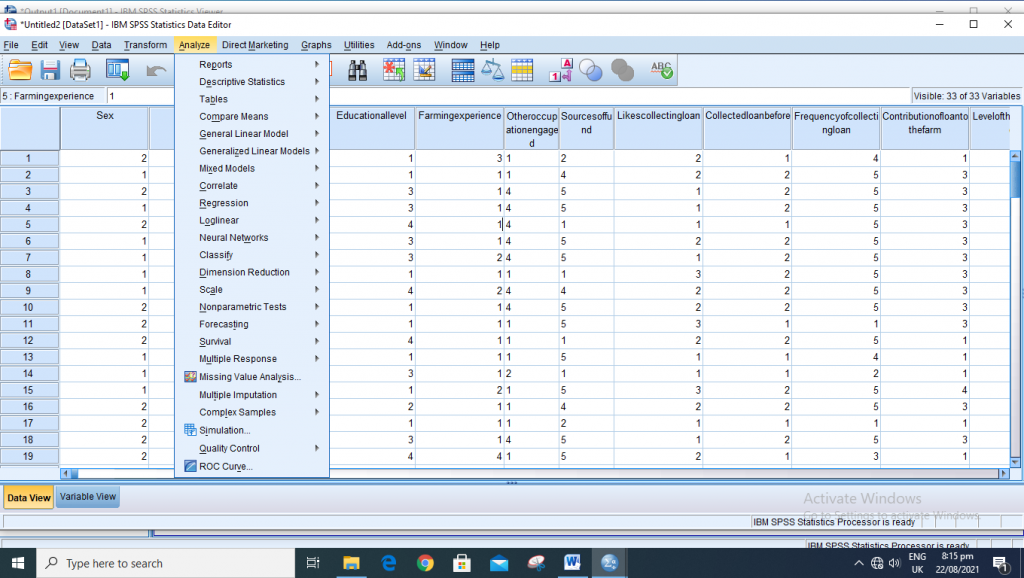

The Factor List box allows you to split your dependent variable on the basis of the different levels of your independent variable(s). You can either drag and drop, or use the blue arrow in the middle. To begin, click Analyze -> Descriptive Statistics -> Explore… This will bring up the Explore dialog box, as below.įirst, you’ve got to get the Frisbee Throwing Distance variable over from the left box into the Dependent List box. Our example data, displayed above in SPSS’s Data View, comes from a pretend study looking at the effect of dog ownership on the ability to throw a frisbee.įrisbee Throwing Distance in Metres (highlighted) is the dependent variable, and we need to know whether it is normally distributed before deciding which statistical test to use to determine if dog ownership is related to the ability to throw a frisbee. Your result will pop up – check out the Tests of Normality section.

Click the Plots button, and tick the Normality plots with tests option.Move the variable of interest from the left box into the Dependent List box on the right.Click Analyze -> Descriptive Statistics -> Explore….You should now be able to calculate statistics for skewness and kurtosis in SPSS. You can also see that SPSS has calculated the mean (46.93 metres) and the standard deviation (21.122 metres). The result will pop up in the SPSS output viewer. Once you’ve made your selections, click on Continue, and then on OK in the Descriptives dialog to tell SPSS to do the calculation. You’ll notice that we’ve also instructed SPSS to calculate the mean and standard deviation. To calculate skewness and kurtosis, just select the options (as above). This will bring up the Descriptives: Options dialog box, within which it is possible to choose a number of descriptive measures. Once you’ve got your variable into the right hand column, click on the Options button. You can drag and drop, or use the arrow button, as shown below. You need to get the variable for which you wish to calculate skewness and kurtosis into the box on the right. This will bring up the Descriptives dialog box.

To begin the calculation, click on Analyze -> Descriptive Statistics -> Descriptives. We’re going to use the Descriptives menu option. There are a number of different ways to calculate skewness and kurtosis in SPSS. The usual reason to do this is to get an idea of whether the data is normally distributed. We’re going to calculate the skewness and kurtosis of the data that represents the Frisbee Throwing Distance in Metres variable (see above). Kurtosis measures the tail-heaviness of the distribution. Skewness is a measure of the symmetry, or lack thereof, of a distribution.


 0 kommentar(er)
0 kommentar(er)
